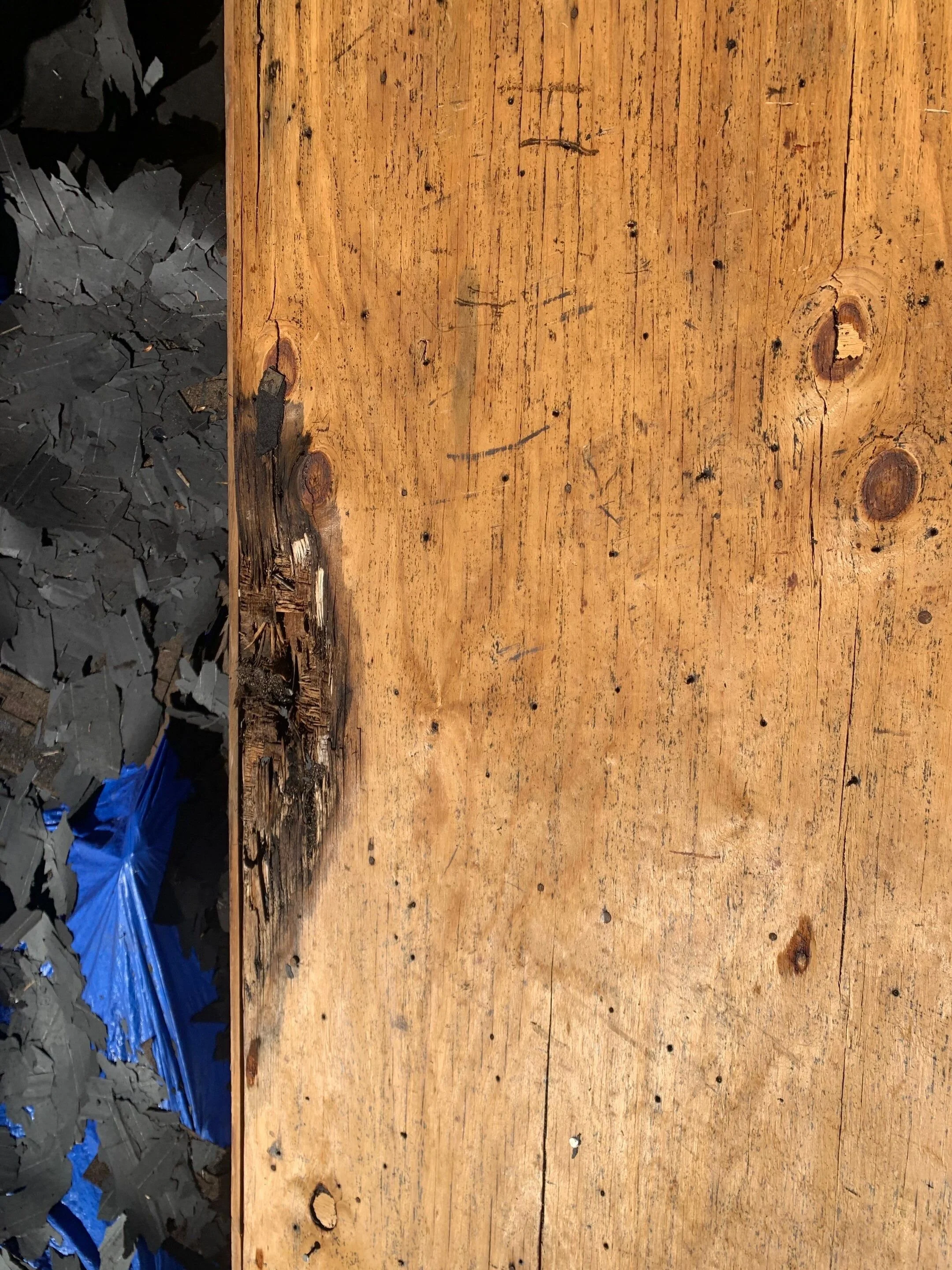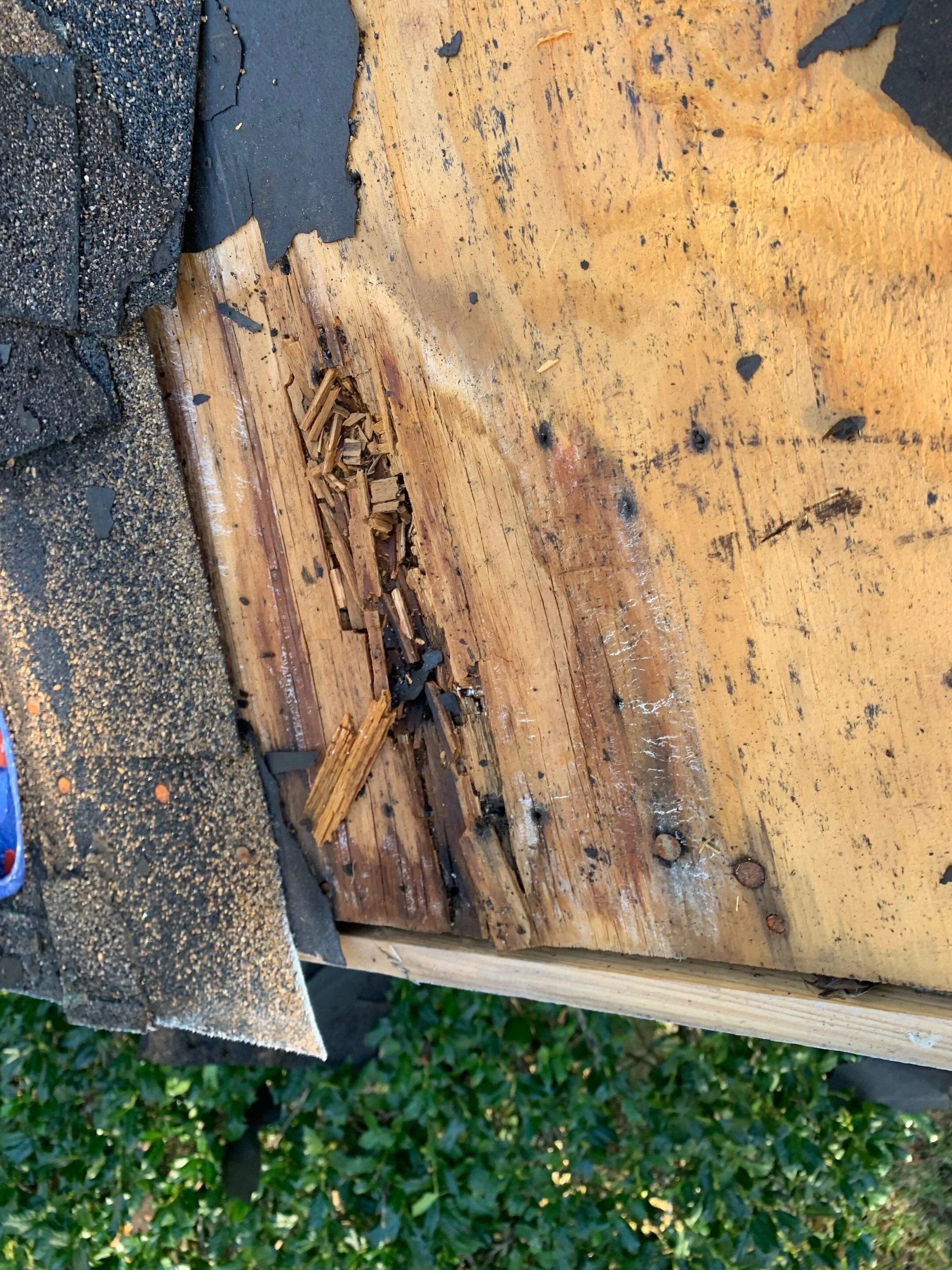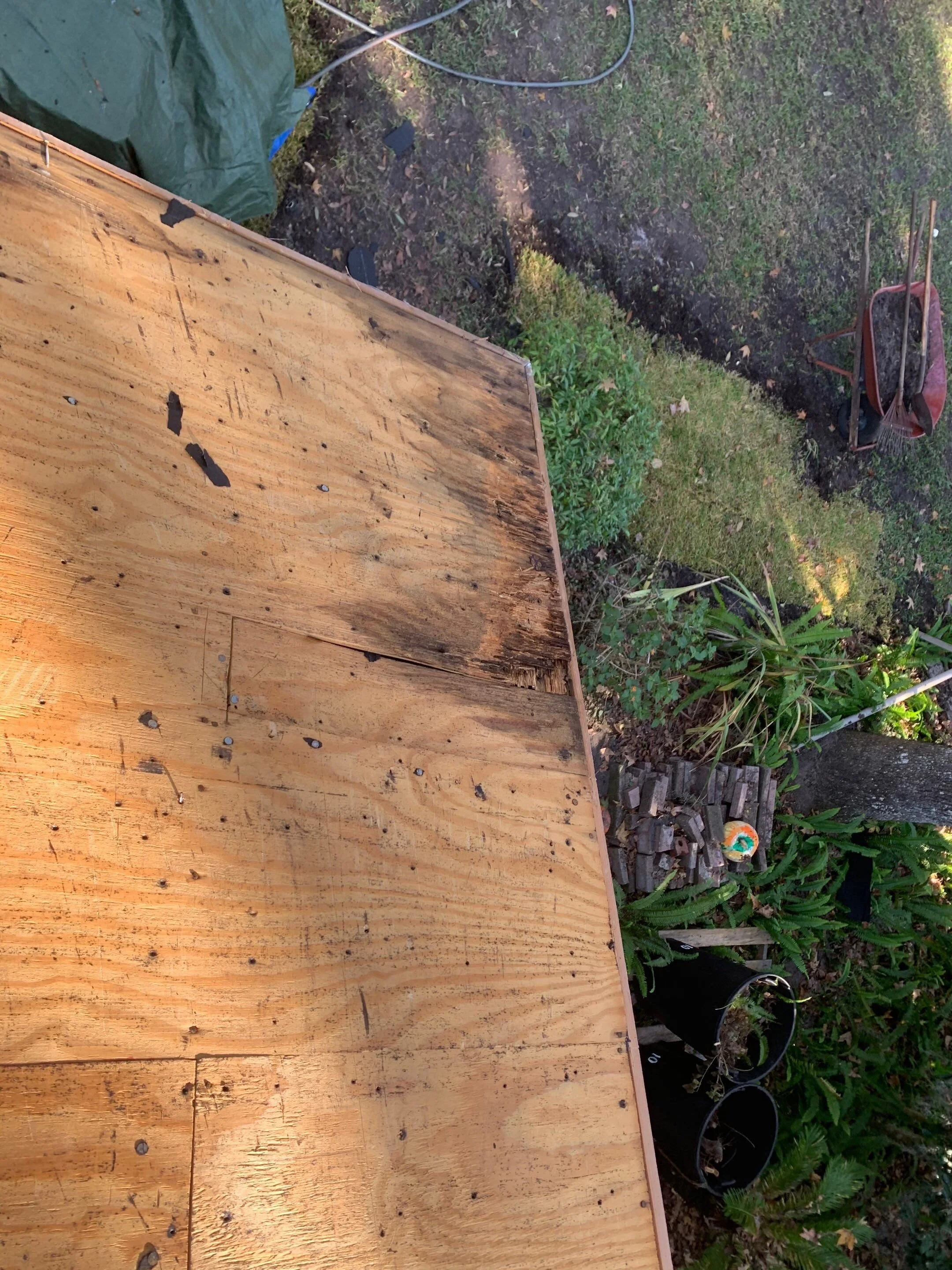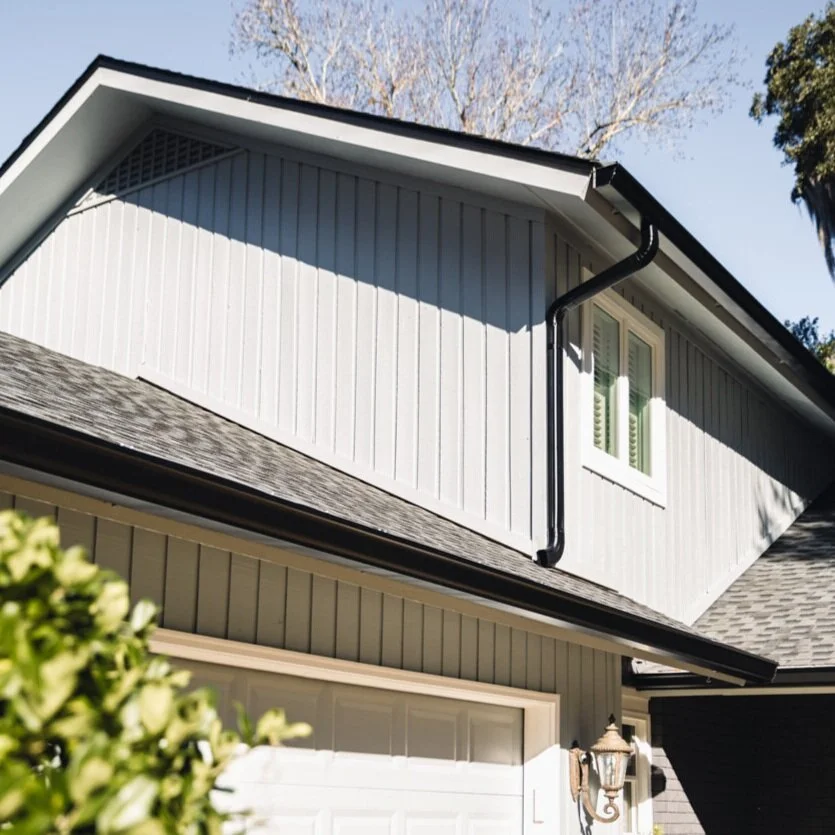So, What’s Actually Under Your Shingles?
So, what’s
actually
under your shingles?
When deciding to replace your roof, there is always the variable of what is actually under your shingles.
Your contractor should remove all shingles, underlayment, and any Other Material down to the bare sheathing in order to expose any potential sheathing issues.
If you currently have soft spots or sagging in your roof, it most likely means that there has been water intrusion under the shingles at some point in time. This water intrusion would cause the wood sheathing to rot overtime, weakening your roof’s structure. While this can be repaired with new sheathing during the replacement process, it is often an unexpected cost that is hard to estimate beforehand. Once discovered, your contractor should always present you with an additional work order detailing the repairs necessary and the costs of those repairs.
Another factor to consider when replacing your roof is the aluminum flashing. While some homes may not require it, homes with chimneys, garage connections or other roof/siding connections require flashing along these areas. This is to prevent water intrusion around these points and help direct water flow away from the home. If the aluminum flashing is not installed properly, it can cause future water damage.
Once the shingles are removed and everything has been inspected, a form of underlayment will be put down. While felt paper used to be the standard underlayment material, we recommend using synthetic underlayment due to the added benefits and protection it offers. It is also a requirement of most shingle manufacturers in order to get the best warranty possible. Then the shingles along with any aluminum flashing or aluminum drip edge are installed.




